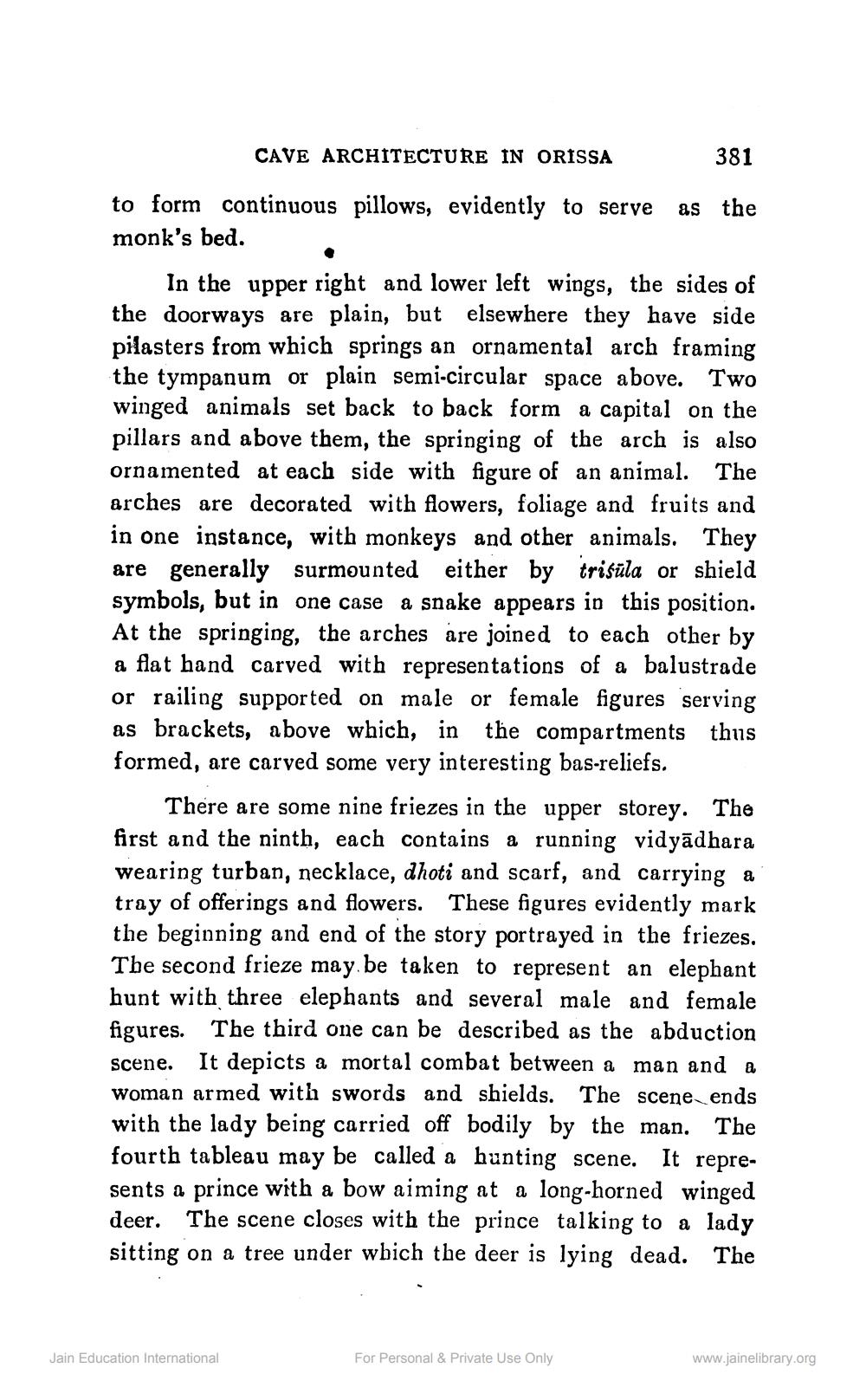________________
CAVE ARCHITECTURE IN ORISSA
381
to form continuous pillows, evidently to serve as the monk's bed.
In the upper right and lower left wings, the sides of the doorways are plain, but elsewhere they have side pilasters from which springs an ornamental arch framing the tympanum or plain semi-circular space above. Two winged animals set back to back form a capital on the pillars and above them, the springing of the arch is also ornamented at each side with figure of an animal. The arches are decorated with flowers, foliage and fruits and in one instance, with monkeys and other animals. They are generally surmounted either by trisüla or shield symbols, but in one case a snake appears in this position. At the springing, the arches are joined to each other by a flat hand carved with representations of a balustrade or railing supported on male or female figures serving as brackets, above which, in the compartments thus formed, are carved some very interesting bas-reliefs.
There are some nine friezes in the upper storey. The first and the ninth, each contains a running vidyādhara wearing turban, necklace, dhoti and scarf, and carrying a tray of offerings and flowers. These figures evidently mark the beginning and end of the story portrayed in the friezes. The second frieze may be taken to represent an elephant hunt with three elephants and several male and female figures. The third one can be described as the abduction scene. It depicts a mortal combat between a man and a woman armed with swords and shields. The scene ends with the lady being carried off bodily by the man. The fourth tableau may be called a hunting scene. It represents a prince with a bow aiming at a long-horned winged deer. The scene closes with the prince talking to a lady sitting on a tree under wbich the deer is lying dead. The
Jain Education International
For Personal & Private Use Only
www.jainelibrary.org




